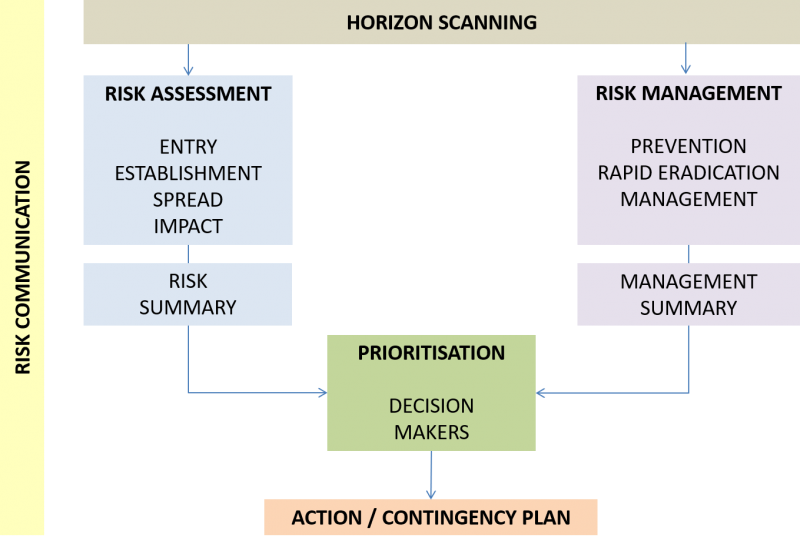Risk analysis is the overall process of using evidence to assess the threat posed by a non-native species, evaluate management options and communicate the results to inform decision making (similar to ISPM No. 5). In GB, risk analysis comprises: hazard identification (horizon scanning), risk assessment, risk management and risk communication.
Learn more about:
About risk analysis
Risk analysis is a structured, science based process that helps provides the rationale for implementing management measures. It is also used to manage uncertainty, helping decisions to be made when scientific information is incomplete. Evidence used to complete risk analysis can be qualitative or quantitative using evidence ranging from published scientific literature, to grey literature, to expert judgement. For more information Vanderhoeven et al (2017) (external link) provide a useful discussion on risk analysis, its uses and components.
Traditionally risk analysis comprises (at least):
- hazard identification (in GB provided by horizon scanning), used to identify species likely to be a threat;
- risk assessment, used to assess the likelihood and severity of the threat;
- risk management, used to evaluate management options; and
- risk communication, the means by which the results of risk analysis are summarised and accurately communicated.
The risk analysis mechanism in GB has been developing since 2006 and now incorporates horizon scanning, risk assessment, risk management (for eradication) and risk communication. These pages provide more detail on the components on the mechanism.
The figure below illustrates the relationship between the components of risk analysis, decision making and action in GB. This diagram shows the components of risk analysis with horizon scanning leading to both risk assessment (entry, establishment, spread and impact) and risk management (prevention, eradication and long term management), then risk summaries used by decision makers to aid prioritisation and eventually support action / contingency planning.

